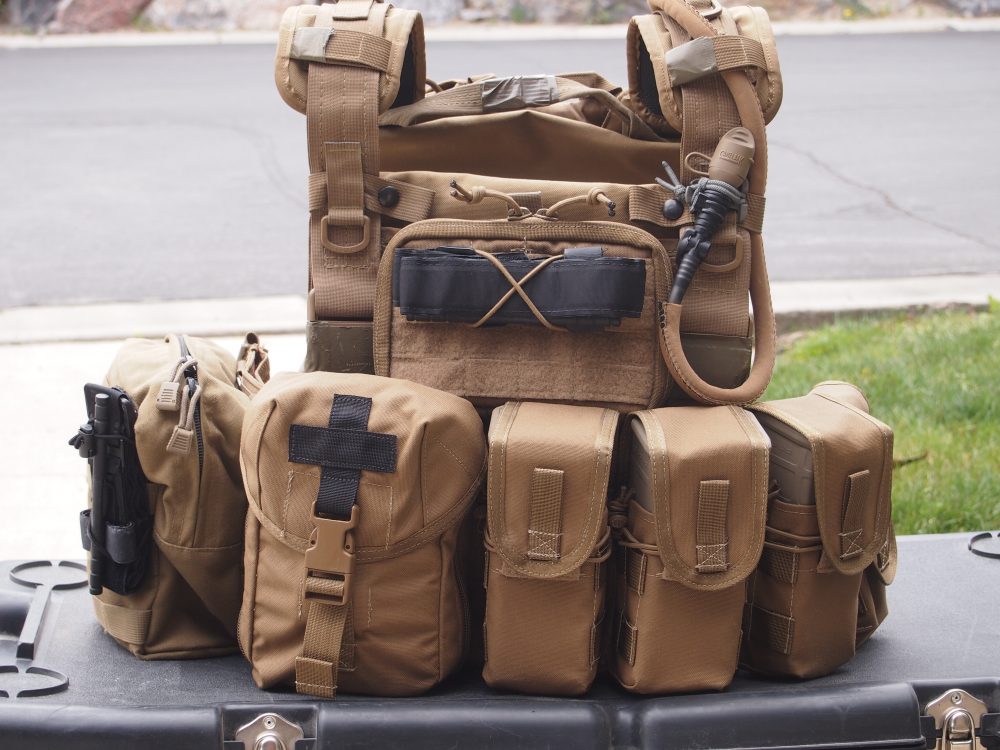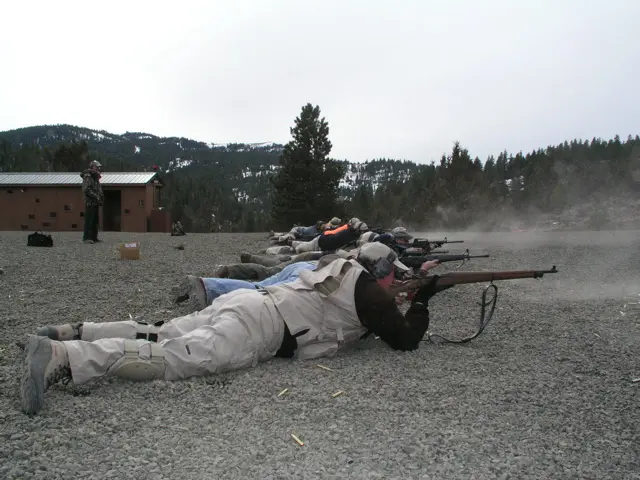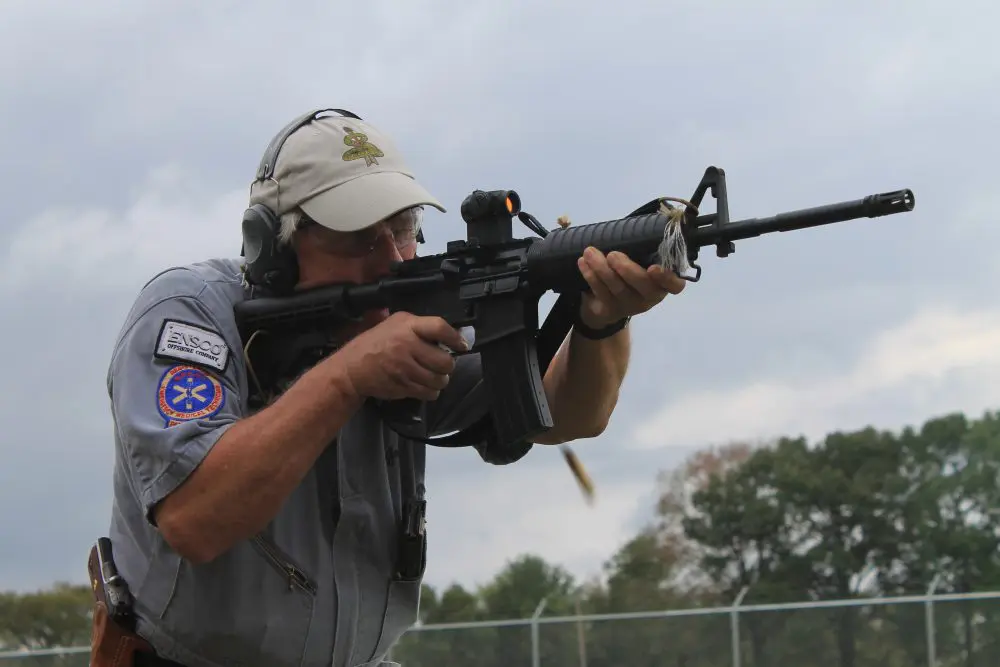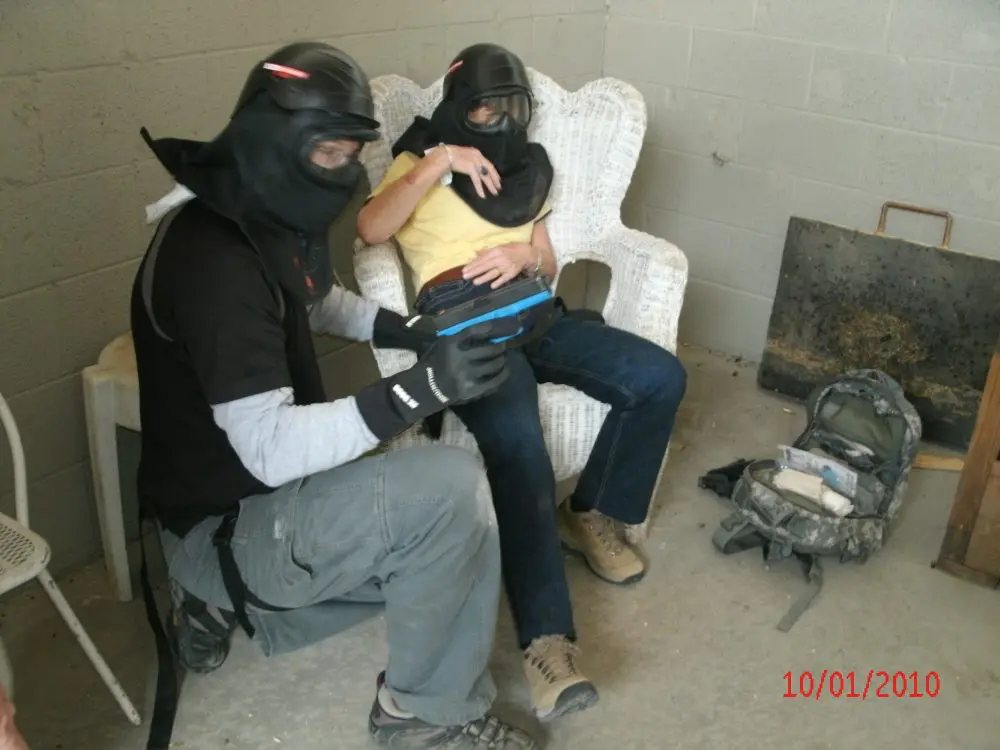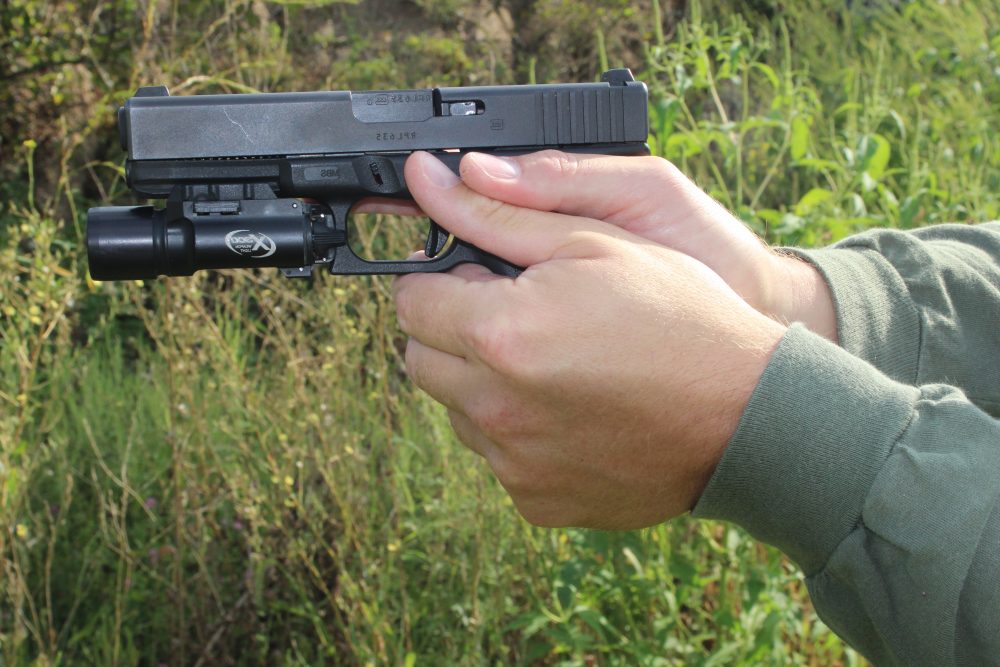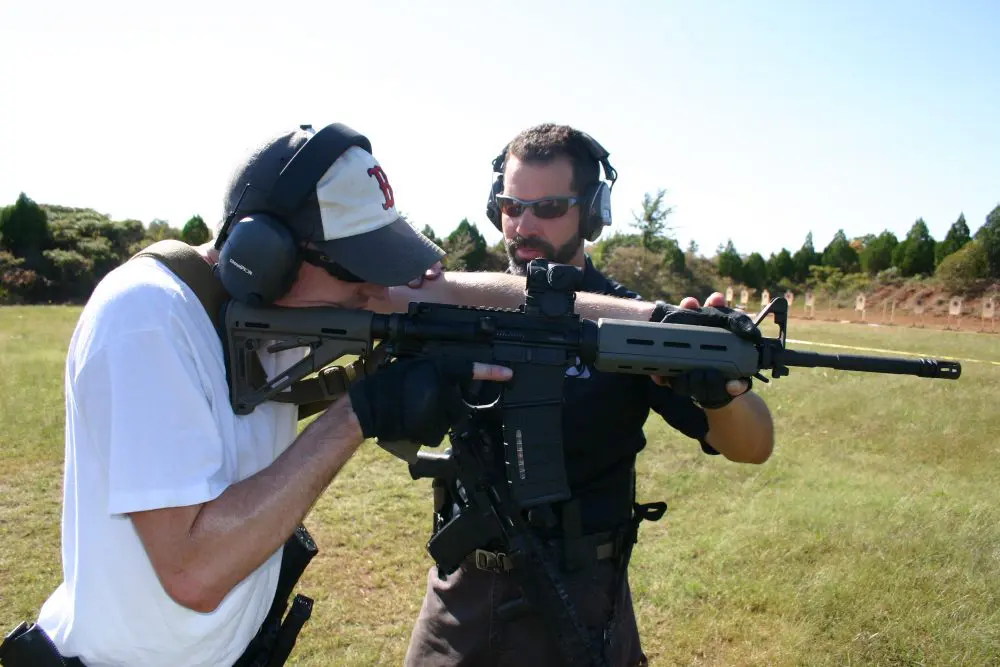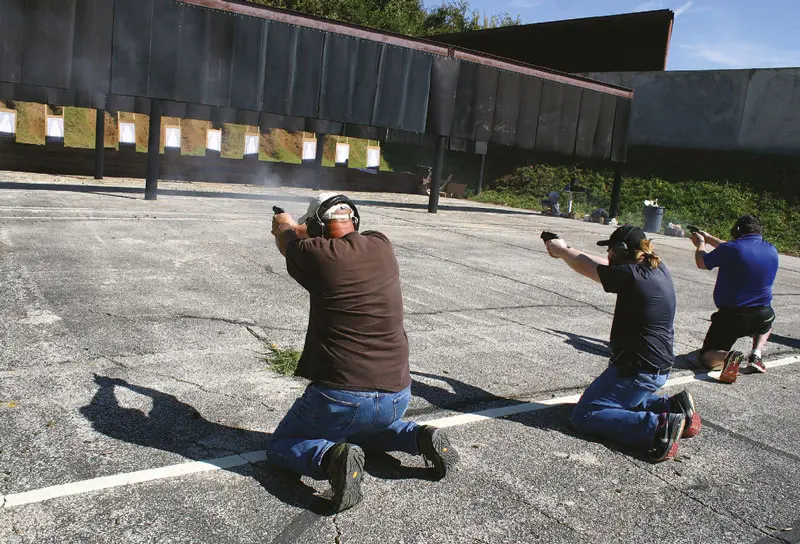
Today the revolver is seen as a secondary sidearm. Its most popular use is as a backup or pocket carry for small hammerless revolvers. It is rarely seen in commercial firearms classes, and it’s been a generation since revolvers were the primary sidearm taught in most police academies.
A summit was held at the Dallas Pistol Club, the goal of which was to preserve the craft and knowledge of effective use of the revolver. All the instructors were veteran peace officers who learned the wheelgun in the academy and carried it on duty.
Much of the mindset and tactics covered was applicable to any firearm, as were the practices suggested to lead a more secure lifestyle. Though revolvers have fallen out of favor as compared to automatics, they still offer huge benefits to less dedicated users because they are simpler to operate and their administrative handling is easier.
Pat Rogers was scheduled to be a surprise guest instructor, but sadly, he passed away before the summit took place. This was a tremendous loss to the training community as well as to S.W.A.T. Magazine. Thus, the gathering was christened the Pat Rogers Memorial Revolver Summit.
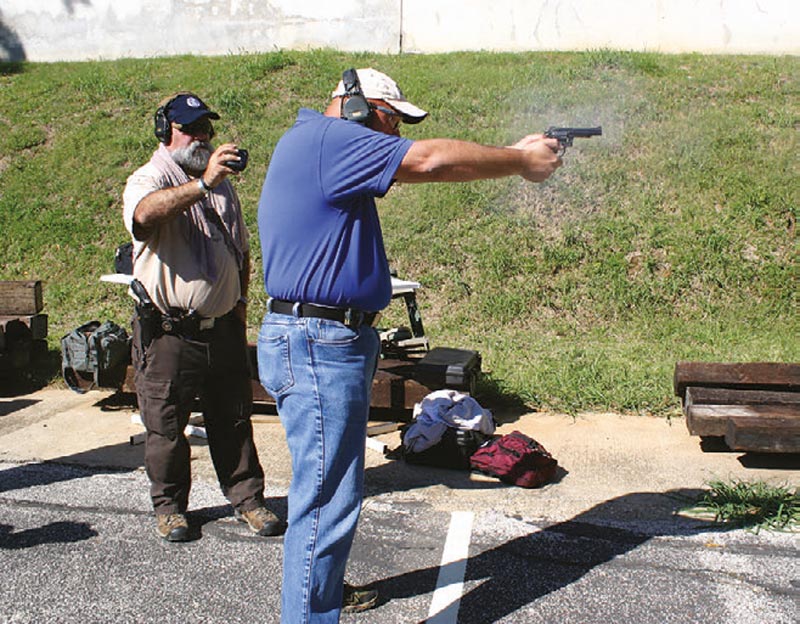
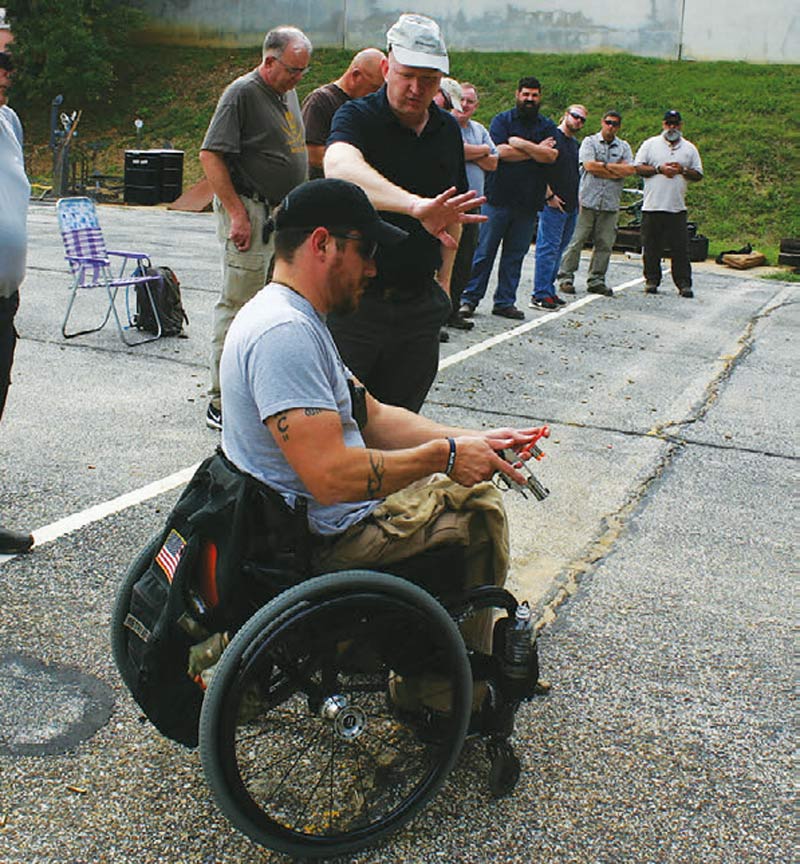
While Pat is best known for pistol and carbine expertise, he cut his teeth on the revolver with the NYPD and used one in several shootings. He often said that “a .38 works fine if you hit with it in the right area.” He pointed out that in his days on the NYPD, when only revolvers were allowed, the tactically prudent officers carried several because reloads with revolvers were slower than with automatics. Hence the term the “New York Reload” came about—a term Pat hated because it was not remotely New York specific. The NYPD Patrol Guide suggested carrying a backup revolver.
In addition to his four-inch S&W Model 10 service revolver, Pat typically carried a Smith & Wesson Model 36-1 in an IWB holster at about one o’clock behind the two dump pouches on his duty belt. When working crime-suppression assignments later in his career, Pat carried his beloved 2¾-inch Ruger Speed Six and an S&W Bodyguard.
The knowledge Pat passed on was repeated throughout class to keep Pat’s thoughts and knowledge alive and have students benefit from his hard-earned wisdom.
Table of Contents
THE SUMMIT
The two-day summit was taught by four veteran law enforcement firearms instructors who began their careers with the revolver and carried one (in most cases more than one) on duty. The lineup comprised Wayne Dobbs and Darryl Bolke of Hardwired Tactical Shooting, Tom Givens of Rangemaster, and Michael de Bethencourt of Snubtraining.com.
These instructors treated us to a variety of perspectives that complemented each other. Though they have a long history with revolvers, and in some cases an extreme affinity for wheelguns, they did not sugarcoat anything.
The instructors pointed out that at the time when revolvers were standard issue, there was more of an emphasis on shooting skills and accuracy, since the officers knew they only had six shots before they had to reload. They went over several qualification courses of the era, when the emphasis was on accuracy, not time.
“The difference in standards for law enforcement has changed a lot in shooting,” Darryl Bolke told the class. “Bullseye was the game in those eras.” In those days, shooting badges were a normal part of a police uniform, and they meant something.
During the revolver’s glory days in law enforcement, the officers were often military veterans, came from backgrounds that involved firearms, and were from families of cops who grew up with relatives who carried guns, so shooting proficiency was a matter of pride in LE circles. There was a time in our past when guys like Jelly Bryce were recruited into the FBI because of their shooting skill, both competitively and against felons.
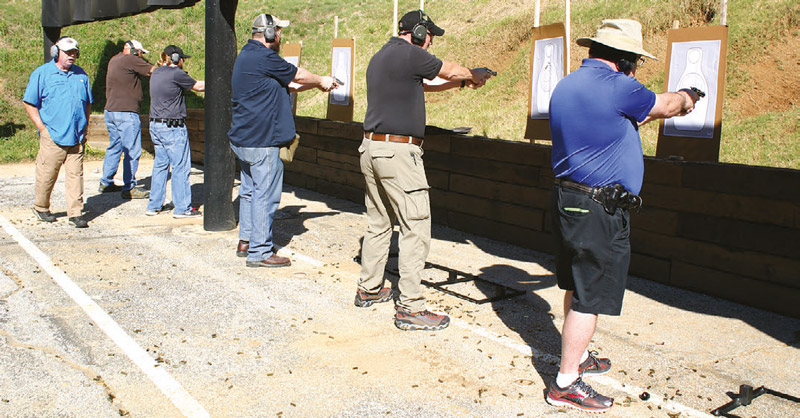
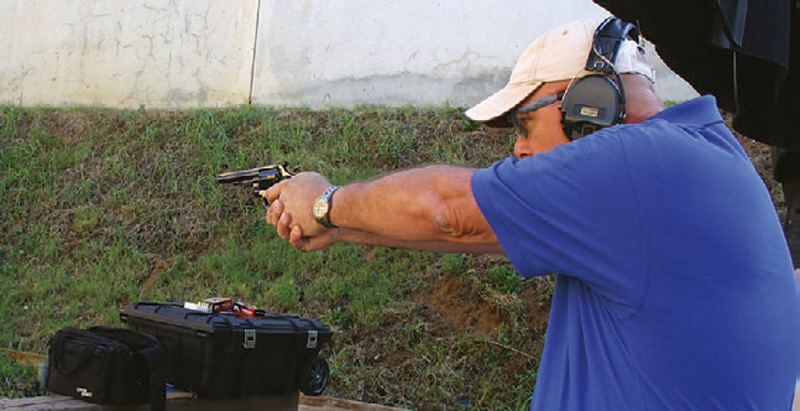
DAY 1: FULL-SIZED REVOLVERS
The first day was devoted to full-sized revolvers. This served to build a good base for the second day, which would cover the harder-to-shoot snubnoses. Wayne Dobbs delivered the best safety brief I have ever experienced and is one of the best instructors I have trained with when it comes to teaching trigger manipulation, so it was only natural that he taught the module on how to run a double-action revolver trigger.
Wayne stressed that for real-life defensive use, singleaction is a no-go. He began by covering trigger-finger placement. With a D/A revolver, the first crease of the finger should be used to pull the trigger. Pressing with the pad results in too much lateral movement of the gun for many shooters. When firing the revolver double-action, Wayne taught to roll the trigger straight back with a nice long and smooth stroke. “As soon as you make the decision to shoot,” he told us, “you need to be rolling that trigger.”
He also went over grip and the importance of getting as high up as possible. Wayne commented that if you can handle a D/A trigger well, all other triggers are easy, since the most important aspect in shooting accurately is working the trigger.
Not all students had their own revolver, so some borrowed revolvers from the instructors. In a class full of students accustomed to automatics, shooting scores were generally not as good with revolvers. But we did see some people improve drastically.
The targets we shot were NRA B8 Bullseye repair center targets inside of a silhouette, with the goal being to keep our shots in the black of the Bull. But goal and reality proved to be two different things—especially as the distance increased.
For accuracy on a target without scoring rings or features, we were advised to focus on a specific spot in a vital area. We practiced various drills with the revolver the first day and topped it off by firing the FBI revolver qualification course and the HITS 50-round qualifier course.
Darryl Bolke covered reloads and manipulations. With revolvers, even using speedloaders, reloads are something you do when you get behind cover if at all possible.
When reloading with a speedloader, many people slow themselves down by trying to align all six rounds. By lining up two of the rounds, you will ensure that the rest of the rounds align themselves.
HISTORY LESSON
Tom Givens started off the second day with a comprehensive history of the police revolver. We received amazing insights into revolvers and their use by police departments, including how well different models held up. He showed pages of police texts from the 1930s that stated the revolver should be fired single-action, except for emergencies and situations when the officer was “in close proximity to the adversary.”
Tom’s presentation highlighted the disadvantages of revolvers. He is not a fan of the wheelgun for modern use and feels it is obsolete as a primary firearm. He dispelled the myth that revolvers never malfunction and pointed out that more things can go wrong with them because of their mechanical complexity. Their mechanisms are actually more sensitive, like the inside of a watch, and something such as an accumulation of unburned powder behind the star could prevent the cylinder from turning or opening.
And when the revolver did go down, it often went down hard, requiring a trip to an armorer or the factory to bring it back into working condition. Furthermore, they are not as easily maintained as a modern modular service pistol, the Glock being a good example, with one-day armorer courses and easily replaceable parts.
Part of the reason the revolver developed its reputation for reliability is because most revolvers of the past held only five or six rounds, were slower to reload, and thus had fewer rounds shot through them over their lifetime. Wayne pointed out that if you fired 500 rounds of .38 through a revolver in a day without adequate cleaning, the gun would stop working due to buildup around the cylinder.
The instructors shared memories of cleaning brushes and a specialized Lewis Lead Remover tool being common accessories at police ranges and PPC courses, and it was common for shooters to give their guns a quick brush in areas vulnerable to the buildup of unburned powder and lead.
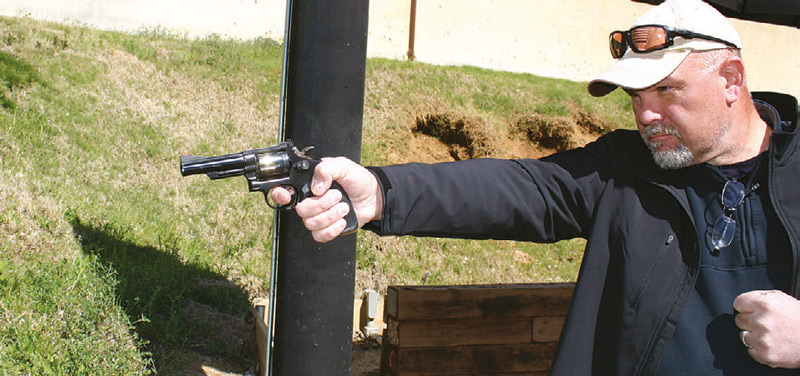
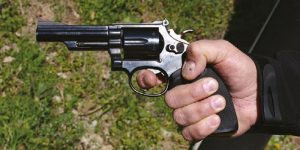
DAY 2: SNUBBY TIME!
The second day of the summit was devoted to the snubnose. So next we adjourned to the range to cover several courses of fire with our snubnoses. Tom ran the morning drills, and Michael de Bethencourt took over the instruction in the afternoon. Michael is still active-duty law enforcement and carries a revolver as his primary sidearm.
Michael is a passionate advocate of a hammerless or shrouded-hammer snubnose revolver. He believes one should select a handgun they can carry 24/7 and become a master of it. He related many situations of officers who were caught in a bad situation unarmed while off-duty because they considered their normal sidearms and secondaries to be too cumbersome.
He went over a list of snubnose revolvers, with ways to set them up and accessories to maximize their effectiveness. He spent a lot of time on reloading the snubnose. While he believed that grips should be chosen and optimized for the use of a speedloader, he emphasized the use of a speed strip.
When reloading, he believes speed is of the essence, thus he taught setting up the speed strips with four rounds set up in sets of two with space between them. This makes them easier to grab and manipulate and quicker to load. He cited the case of an officer who was killed while he was loading the last of six rounds that his revolver held. Thus he taught that a partial reload is quicker, and it is often more important to get the gun up and running as quickly as possible.
Darryl explained that the hammerless or shrouded-hammer snubnose revolver works best for pocket carry because its grip is easier to grab and its shape allows it to slip out of the pocket more easily than a similarly sized small automatic, which has a square profile with sharp angles that can snag. He also pointed out that if carried in this fashion, it needs a pocket holster, both to break up its outline and to keep it oriented in an upright position to permit drawing.
It also necessitates smaller grips to allow the gun to slip in and out of the pocket. Pants should be chosen with deeper pockets, or they can be brought to a tailor to have the pockets deepened. However, smaller grips, shorter barrels, and miniscule nonsnag sights make the gun harder to shoot accurately.
RELOADING
While Tom Givens stated he had never come across a case of a revolver being reloaded during a fight, Michael de Bethencourt and Darryl Bolke both mentioned they had encountered several. This was a benefit of having a summit taught by qualified teachers with differing views and experiences. All the instructors believe it is a benefit to students to see material presented differently to allow students to fit what works best for them.
A good example was reloading. Darryl Bolke showed his preferred strong-hand reload and why he likes it, and Michael de Bethencourt advocates a support-hand reload and leaving the revolver secured in the primary hand. This allowed participants to try multiple ways to perform a task and to understand the benefits and negatives of different procedures.
Because of Pat Rogers’ love of dogs, a collection was taken and then matched by the HITS instructors. It resulted in a $500 donation made in Pat’s name to a local dog rescue that does terrific work in the Dallas-Fort Worth area.
The summit will be an annual event held in October and featuring different guest instructors and topics to keep it varied every year. Look for the announcement with signup links on the Hardwired Tactical Shooting Facebook page.
I plan on being there again.
